Training your upper back is a fundamental part of growing and framing your back. Whether you are a seasoned workout veteran or creating your first training plan, the exercises below will help you meet your fitness goals.
dumbbell side plank with rear fly
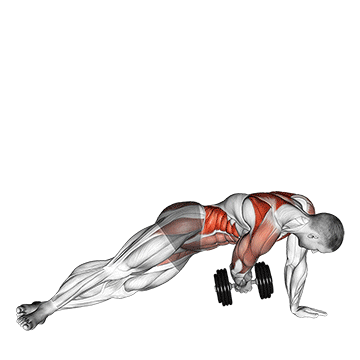
1. Start by selecting a dumbbell of appropriate weight. Remember, it's better to start light and increase weight as you get comfortable with the exercise.
2. Position yourself into a side plank on your left side. Your left elbow should be directly under your shoulder, and your body should form a straight line from your head to your feet.
3. Hold the dumbbell in your right hand, keeping your arm straight and the dumbbell hanging down towards the floor.
4. Engage your core and maintain your balance. This is your starting position.
5. Slowly lift the dumbbell up and out to the side, keeping your arm straight. Your arm should be lifted until it's parallel to the floor, creating a T shape with your body.
6. Hold this position for a moment, focusing on squeezing your shoulder blades together to engage your upper back muscles.
7. Slowly lower the dumbbell back down to the starting position.
8. Repeat this movement for your desired number of repetitions.
9. Once you've completed your set, switch to the other side and repeat the exercise with the dumbbell in your left hand and planking on your right side.
Remember to keep your movements slow and controlled, focusing on the muscle contraction and not on the weights you're lifting. Always keep your core engaged to maintain balance and protect your lower back.
dumbbell reverse grip row (female)
_Back_360.gif)
1. Start by selecting a pair of dumbbells that you're comfortable with. Stand upright with your feet shoulder-width apart.
2. Hold the dumbbells in front of you with your palms facing your body. This is your starting position.
3. Bend your knees slightly and lean forward from your hips, not your waist. Keep your back straight and almost parallel to the floor.
4. Keep your head up and your eyes looking forward. Your hands should be hanging directly in front of you, with your palms facing your body.
5. Now, pull the dumbbells towards your chest, keeping your elbows close to your body. Make sure to squeeze your shoulder blades together at the top of the movement.
6. Slowly lower the dumbbells back to the starting position. This completes one rep.
7. Aim for 3 sets of 10-12 reps, ensuring to maintain proper form throughout.
Remember to keep your movements controlled, don't let the dumbbells control you. This exercise targets your upper back, but also works your biceps and shoulders.
dumbbell reverse grip incline bench two arm row
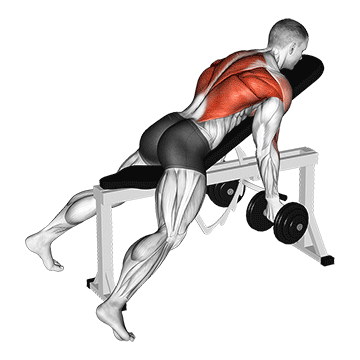
1. Start by setting an incline bench at a 45-degree angle.
2. Grab a pair of dumbbells and sit on the bench, leaning forward so your chest is pressed against the bench. Your feet should be flat on the ground for stability.
3. Hold the dumbbells with a reverse grip, meaning your palms should be facing forward. Let the dumbbells hang down at arm's length.
4. Pull the dumbbells up towards your chest, keeping your elbows close to your body. Ensure your upper arms are parallel to your body and your forearms are perpendicular to the ground. This is your starting position.
5. Slowly lower the dumbbells back to the initial position, fully extending your arms and feeling a stretch in your upper back muscles.
6. Repeat this movement for the desired number of repetitions.
Remember to keep your back straight and your movements controlled throughout the exercise. Avoid using your body momentum to lift the weights; instead, focus on squeezing your back muscles.
dumbbell reverse grip incline bench one arm row
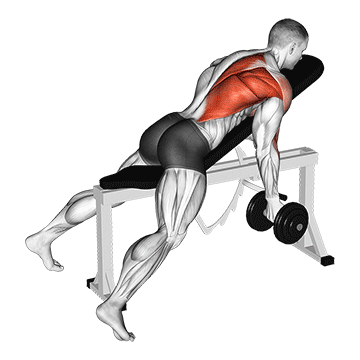
1. Start by selecting a dumbbell of appropriate weight. Remember, it's always better to start light and gradually increase the weight as you get comfortable with the exercise.
2. Position yourself on an incline bench, lying face down. Ensure your chest is at the top of the bench and your feet are flat on the ground for stability.
3. Hold the dumbbell in your right hand with a reverse grip, meaning your palm should be facing forward.
4. Extend your arm fully so that it is hanging straight down from your shoulder. This is your starting position.
5. Begin the exercise by pulling the dumbbell upwards towards your chest. Keep your elbow close to your body throughout the movement.
6. Once the dumbbell reaches your chest, pause for a moment and squeeze your shoulder blades together to engage your upper back muscles.
7. Slowly lower the dumbbell back to the starting position, ensuring you maintain control of the weight at all times.
8. Repeat the exercise for your desired number of repetitions before switching to your left hand.
9. Remember to keep your back straight and avoid any twisting or turning of your torso during the exercise. This will help to isolate your upper back muscles and prevent any potential injuries.
10. As with all exercises, it's important to breathe. Inhale as you lower the dumbbell and exhale as you pull it towards your chest.
11. Repeat this exercise for 2-3 sets of 10-15 repetitions on each side, or as recommended by your fitness professional.
dumbbell palm rotational bent over row
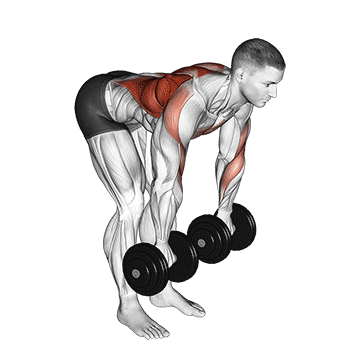
1. Start by selecting a pair of dumbbells of appropriate weight. Stand with your feet shoulder-width apart and hold the dumbbells in each hand.
2. Bend your knees slightly and lean forward from your waist until your torso is almost parallel to the floor. Keep your back straight and your head up. This is your starting position.
3. Hold the dumbbells with your palms facing each other. Keep your elbows close to your body and your hands directly under your shoulders.
4. Pull the dumbbells towards your chest by bending your elbows and squeezing your shoulder blades together. As you do this, rotate your palms so they face the ceiling.
5. Pause for a moment at the top of the movement, then slowly lower the dumbbells back to the starting position, rotating your palms back to face each other.
6. Repeat this movement for the desired number of repetitions.
Remember to keep your back straight and your core engaged throughout the exercise to protect your lower back. Also, ensure that you are pulling the weights with your back muscles, not your arms. The rotation of the palms adds an extra challenge to the upper back muscles, helping to strengthen and tone them.
dumbbell one arm bent-over row
1. Stand with your feet shoulder-width apart and hold a dumbbell in one hand.
2. Bend your knees slightly and lean forward from your waist until your torso is almost parallel to the floor. Keep your back straight.
3. Hold the dumbbell with your palm facing towards your body. This is your starting position.
4. Pull the dumbbell up towards your chest, keeping your elbow close to your body and your back straight. Ensure you are pulling with your back muscles, not your arm.
5. Slowly lower the dumbbell back down to the starting position. This completes one rep.
6. Repeat the exercise for your desired number of reps, then switch to the other arm.
7. Remember to keep your core engaged and your back straight throughout the exercise.
8. For best results, perform this exercise slowly and with control, focusing on the muscle contraction and not on the weights you are lifting.
9. Always choose a weight that is challenging but allows you to complete each rep with proper form.
10. This exercise can be performed in sets of 8-12 reps, with 1-2 minutes rest between sets.
dumbbell lying rear delt row
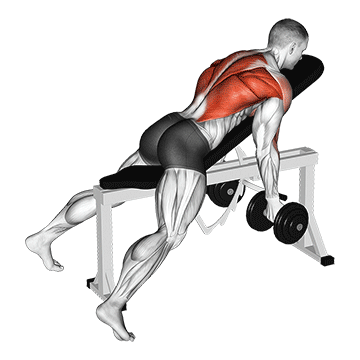
To perform the dumbbell lying rear delt row, follow these steps:
1. Start by selecting a pair of dumbbells of appropriate weight. Remember, it's always better to start light and gradually increase the weight as you get comfortable with the exercise.
2. Lie face down on a flat bench with your chest firmly pressed against it. Your feet should be flat on the floor for stability.
3. Hold the dumbbells directly under your chest with your palms facing each other. This is your starting position.
4. Keeping your elbows slightly bent, lift the dumbbells to your sides in a wide arc until they're level with your shoulders. Ensure that you're using your upper back muscles to perform this movement, not your arms.
5. Pause for a moment at the top of the movement, then slowly lower the dumbbells back to the starting position.
6. Repeat this movement for the desired number of repetitions.
Remember to keep your head down and neck relaxed throughout the exercise to avoid strain. Also, ensure that the movement is controlled and steady, not jerky. This exercise primarily targets the upper back, but also works the shoulders and arms.
dumbbell incline y-raise
To perform the dumbbell incline Y-raise, follow these steps:
1. Start by setting an incline bench at a 45-degree angle.
2. Grab a pair of dumbbells with a weight that you're comfortable with. Remember, it's not about the weight but the correct form and technique.
3. Sit on the bench with your chest and stomach pressed against the incline. Let your arms hang straight down, holding the dumbbells. This is your starting position.
4. Keeping your body still, slowly lift the dumbbells up and out to your sides in a Y shape, keeping your arms straight. Your body and arms should form a "Y".
5. Lift until your arms are in line with your body, then pause for a moment at the top of the movement.
6. Slowly lower the dumbbells back to the starting position.
7. Repeat this movement for your desired number of repetitions.
Remember to keep your back straight and your movements controlled. Don't use your body to lift the weights; ensure your upper back is doing the work. This exercise targets your upper back, specifically your deltoids and trapezius muscles.
dumbbell incline row
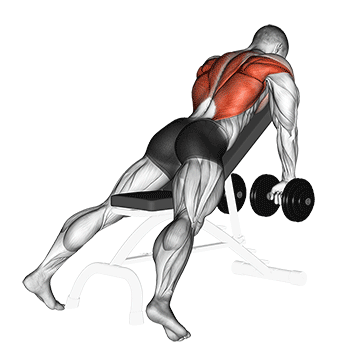
1. Start by setting an incline bench at a 45-degree angle.
2. Grab a pair of dumbbells and sit on the bench, letting your arms hang down and holding the dumbbells with your palms facing each other.
3. Lean forward, keeping your back straight and slightly bending your knees. Your chest should be pressed against the incline bench.
4. Pull the dumbbells up towards your chest, keeping your elbows close to your body. Ensure that you're pulling with your back muscles, not your arms.
5. Squeeze your shoulder blades together at the top of the movement, then slowly lower the dumbbells back to the starting position.
6. Repeat this movement for your desired number of repetitions.
Remember to keep your movements controlled and steady, focusing on the muscle contraction and not on the weights you are lifting. Avoid using your momentum to lift the weights; your back muscles should be doing the work. If the weight is too heavy and you can't do the exercise with proper form, reduce the weight.
dumbbell bent over row
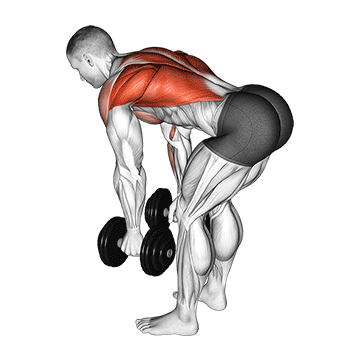
1. Start by standing tall with a dumbbell in each hand, palms facing your torso. Keep your feet shoulder-width apart.
2. Bend your knees slightly and bring your torso forward by bending at the waist. Keep your back straight until it's almost parallel to the floor. Make sure to keep your head up. Your torso should be parallel to the floor and your head pointed up. The dumbbells should hang directly in front of you as your arms hang perpendicular to the floor and your torso. This is your starting position.
3. Now, while keeping the torso stationary, breathe out and lift the dumbbells to your side, keeping the elbows close to the body. At the top contracted position, squeeze the back muscles and hold for a brief pause.
4. Then inhale and slowly lower the dumbbells back to the starting position.
5. Repeat for the recommended amount of repetitions.
Remember to keep your torso stationary and the movement should only occur at the shoulder joint. Also, your forearms should do no other work except for holding the dumbbell; therefore do not try to pull the dumbbell up using the forearms.
No tags for this post.
